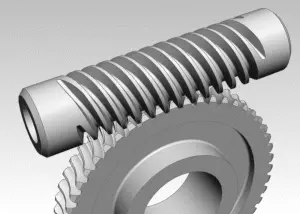THERMAL PROPERTIES OF MATTER

HEAT AND TEMPERATURE
*. Temperature is the measure of degree of hotness or coldness.
*. If two body have tempt T1 and T2, if T1 > T2 then T1 is hotter than T2.
*. Heat is the form of energy which flows from hotter body to colder body by virtue of its temperature difference.
*. Transfer of heat is a non mechanical process.
*. It’s unit is joule (J) and sometimes uses calories (cal). 1 joule equal to 4.2 calorie.
*. According to calorific theory of heat – heat is invisible , colourless, odourless and weightless fluid called caloric ,which flow from hotter body to colder body.
*. According to dynamic theory of heat- all substance (solid, liquid and gases) are made up of molecules. Depending upon the nature and tempt of materials they posses three different types of motion.
1). Translatory motion
2). Vibrational motion
3). Rotational motion
*. Temperature is commonly measured by thermometers.
*. It has different units like Kelvin(K) , degree Celsius (°C) , Fahrenheit (F) etc.
*. Relation between Fahrenheit and degree Celsius is ,Tf= (9/5)Tc+32
*. Relation between degree Celsius and Kelvin is ; Tk= Tc+ 273.15
*. All temperature measuring scales are related to other scales as below-
C-0/100 = F-32/180 = R-0/80 = K-273/100
= Ra-460/212
HEAT CAPACITY
*. Heat or thermal capacity is the amount of heat needed to change the temperature by unity ie. 1°C , heat capacity is denoted by S and it’s SI unit is J/K.
Heat capacity (S) = ∆Q/∆T
*. Specific heat capacity defined as- the amount of heat needed to raise the temperature of mass m by unity. It is denoted by (s) and it’s SI unit is
J/Kg.K.
Specific heat capacity (s) = S/m = ∆Q/m.∆T
*. Molar specific heat capacity is defined as- it is the amount of heat needed to raise the temperature of one mole of substance (gas) by unity. It is denoted by C , it’s SI unit is J/mol.K
C = S/μ = ∆Q/μ.∆T
[μ = no. of mole of substance]
*. Relation between heat capacity and molar specific heat capacity is , C = Ms , where M is molecular mass and s is the specific heat.
*. Latent heat – it is amount of heat needed to change the state of solid of mass m to liquid at melting point of solid and from liquid to gas at boiling point of liquid is called latent heat.
Latent heat is given by Q = mL , where L is the latent heat.
TYPES OF MOLAR SPECIFIC HEAT CAPACITY
*. Molar specific heat capacity at constant pressure – It is the amount of heat needed to raise the temperature of one mole of gas by unity at constant pressure. It is denoted by Cp.
Cp = (∆Q/μ∆T) constant pressure = (f/2 +1)R
*. Molar specific heat capacity at constant volume- It is the amount of heat needed to raise the temperature of one mole of gas by unity at constant volume. It is denoted by Cv.
Cv = (∆Q/μ∆T) constant pressure = (f/2)R
MOLAR HEAT CAPACITY OF IDEAL GAS
*. Heat capacity for monoatomic gases , f= 3
Cv = (3/2)R , Cp = (5/2)R , Cp/Cv = λ = 5/3= 1.67
*. Heat capacity for diatomic gases, f= 5
Cv = (5/2)R , Cp = (7/2)R , Cp/Cv = λ = 7/5= 1.4
*. Heat capacity for triatomic gases, f = 6
Cv = 3R , Cp = 4R , Cp/Cv =λ= 4/3 = 1.33
General equation of heat capacity for gases , if f (degree of freedom of molecules) is given.
Cv = (f/2)R , Cp = (f/2 + 1)R , λ = Cp/Cv = [ 1+2/f]
DULONG AND PETIT LAW
*. Average molar specific heat capacity of all metals at room temperature is nearly same and equal to 3R or 6 cal/mol.K
*. Temperature above which metals have constant Cv is called debye temperature.
*. Mayer’s equation is given by Cp – Cv = R , it is only for ideal gases.
THERMAL EXPANSIONS
*. Thermal expansion is three types-
1). Linear expansion
2). Superficial expansion
3). Volumetric expansion
*. Linear expansion – when any rod is being heated, it’s increase in length ∆L is directly proportional to the original length L0 and change in temperature ∆T.
∆L = αL0∆T , α = ∆L/L0.∆T , α is called the cofficient of linear expansion.
and total increases in length is
L = L0+∆L = L0(1+α∆T) , [ L is length after heating the rod]
*. If rod are free to expand then there will be no stree or strain , but if it is restricted to expand/contract by increasing or decreasing the temperature , then there strain and stree will be produced.
If temperature are used to produce compressive or tensile stress in the rof, then the stress produced is called thermal stress.
Strain = ∆L/L0 = α∆T
*. Superficial expansion – if any solid material is heated then it’s area also increases , this increased area is directly proportional to the original area A0 and change in the temperature ∆T.
∆A = βA0∆T , β = ∆A/A0.∆T , and β is called the cofficient of areal expansion.
Area after heating the solid is –
A = A0+∆A = A0(1+β∆T)
*. Volumetric expansion – if any solid is heated then it’s volume is also increases , this increased volume is directly proportional to the original volume V0 and change in temperature ∆T.
∆V = γV0∆T , γ = ∆V/V0.∆T , γ is called the cofficient of volumetric expansion.
Volume after heating the solid material
V = V0+∆V = V0(1+γ∆T)
*. α , β and γ is related as-
For isotropic material – α:β:γ = 1:2:3 or α/1 = β/2 = γ/3
For non isotropic material
β = α1 + α2 +α3 , here α1, α2 and α3 is linear expansion in X , Y and Z directions.
*. Variations of density with temperature is given by- , d = d0/(1+γ∆T)
Value of γ gamma is usually small for solid, so we write ; d = d0(1 – γ∆T)
*. Apparent expansion of liquid – if container is full and when temperature is changed by ∆T.
Volumetric expansion of liquid in container is –
V(L) = V0(1+γL∆T) , and here γL is the cofficient of liquid volume expansion.
Volumetric expansion of container is-
Vc = V0(1+γc∆T) , γc is the cofficient of container volume expansion.
∆V = VL – Vc = V0(γL – γc)∆T
(γL – γc) is the cofficient of apparent expansion of liquid with respect to container.
γ(app) = γL – γc
Height of the liquid level in the container , if container is initially completely filled.
h = V0(1+γL∆T)/A0(1+2αc∆T)
= h0{1+(γL – 2αc)∆T} then
h = h0{1+(γL – 2αc)∆T}
[h0 is the original height of liquid in the container and αc is the linear cofficient of expansion of container]
*. Calorimetry – if two substance of different mass, different specific heat capacity and with different temperatures are mixed together, then heat starts to flow from high temperature substance to the low temperature substance till a common temperature is reached.
In this heat transfer, heat lost by one body is equal to the heat gain by other body.
m1×s1×∆T1 = m2×s2×∆T2
JOULE’S MECHANICAL EQUIVALENT OF HEAT
*. J=mechanical work done(W)/heat produced(H)
= 4.2J/cal = 4.2×10^7ergs/cal
*. If a object of mass m is falling from height h , and during falling it’s temperature increases to T , then , j = mgh/smT or T = gh/js
*. If a block of ice having mass m, melts during falling from height h then
j = mgh/mL or L = jL/g
*. If a bullet having mass m and moving with velocity v , then it suddenly stops then it’s whole kinetic energy converted into heat, then
j = 1/2mv^2/smT or T = v^2/2js
VARIATIONS OF FORCE OF BUOYANCY WITH TEMPERATURE
*. Force of buoyancy on any object which is completely submerged into the liquid of density dL is , FB = V0dLg
V0 is the volume of object inside the liquid
dLis the density of liquid
Volume of object after increase of the temperature is , V = V0(1+γο∆Τ)
Density of the body after increasing temperature
d’L = dL/(1+γL∆T)
Buoyancy force after increasing temperature
F’B = Vd’Lg
F’B/FB = [1+γο∆Τ]/[1+γL∆T]
But if γL
[W – F’B > W – FB]
VARIATIONS OF TIME PERIOD OF PENDULUM
*. If T = 2π√L0/g is the time period of pendulum at temperature T0 and T’ = 2π√L/g at temperature T. Then
T’/T = √L0/L = √L(1+α∆T)/L = 1+ (1/2)α∆Τ
So change (gain or loss) in time per unit time lapsed is
T’-T/T = (1/2)α∆Τ






